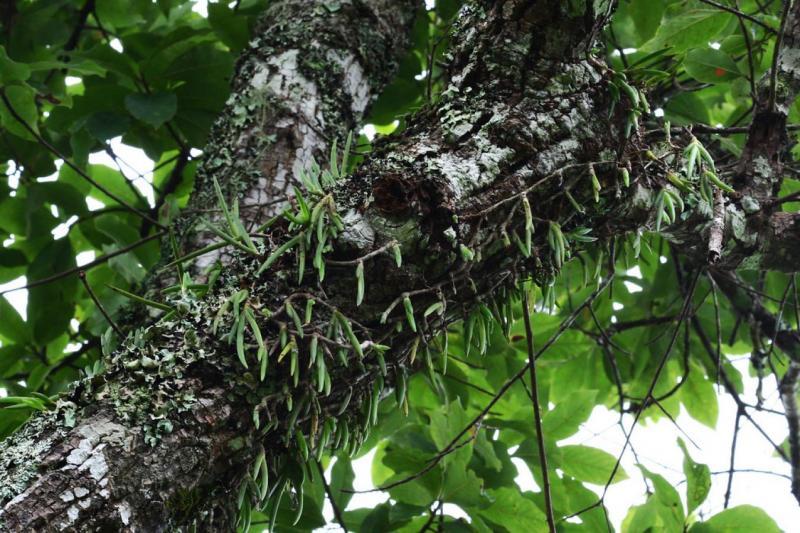Eria pannea
Also known as: The Flag Eria in the subfamily: Epidendroideae
Native to: Bhutan Guangxi - China Indonesia Myanmar Sikkim - India
General Information
The Flag Eria is a sympodial cool to warm growing epiphytic orchid belonging to the sub family Epidendroideae native to Bhutan, China, Indonesia, Myanmar, and India.
Plant Description
Sympodial. Grows to 3-16cm. Each new growth has numerous terete shaped leaves that grow to 0.5-15cm long. Pseudobulbs grow to 1.5cm. The plant tends to climb or sprawl with each new growth
Flowers
Numerous fragrant blossoms appear
Fragrance
The orchid is fragrant. The fragrance can be described as strong
Substrate(s)
- Coarse
- Medium
- Bark
- Charcoal
- Spaghnum Moss
- Perlite
Care Notes
This orchid goes into a dormancy phase during winter, during this phase it is best not to provide water unless the plant is starting to look thirsty. The lack of water increases the chance of flowering in spring, and also reduces the likelihood of any rot forming. Do not resume watering until new growth has appeared and is growing strongly.
Often a period of intense growth occurs after dormancy. During this time the amount of light, water and fertiliser the plant receives will directly impact the amount of growth that occurs during this time, and in the case of seedlings, will reduce the time required to reach maturity.
It's recommended to heavily reduce the water amount at the middle to end of autumn to trigger dormancy. Leaves on older bulbs will begin to drop during this time while the newer bulbs continue to mature until terminal leaves appear at the tip of the pseudobulbs.
Repotting can be done any time of the year though it's best to do it in early spring when new growth is appearing as this also means new roots will appear to help the plant anchor into the new media and offset any damage to established roots during the repotting process.
Fragrant:
- IsFragrant
Climate
Grows at low to high elevations. Rainfall ranges from 13mm to 284mm per day, heaviest in August and lightest in January. Humidity ranges from 76% to 85%, highest in August and lowest in January. Temperature ranges from 6C to 28C, highest in June (20C to 28C) and lowest in January (6C to 14C).
Watering
These orchids prefer a constant supply of moisture, with a slight drying out between waterings. Saucers can be placed under pots to retain moisture during hot weather, however the saucers should be removed or let to dry every 1-2 weeks to prevent rot. Keep an eye on the plant especially in hot weather and look for cues of under/overwatering and adjust accordingly.
Fertiliser
dormant-medium-demand-orchid Use balanced fertiliser during Spring and Summer. Apply fertiliser regularly at half strength year round. Use a high Nitrogen fertiliser during Spring and Summer. Use a high Phosphorous fertiliser during Summer.
Potting
These plants are quite forgiving and will do well repotted ever 2-3 years. The mix should be coarse, well draining, and allow space for air to move and for roots to grow.
Alternatively, these plants will also do well mounted to tree fern or cork slabs, or mounted to trees.
Best time for repotting or mounting the orchids is the end of winter when new growths start to appear. Avoid repotting during hot weather,
Use water retentive media such as moss to prevent roots from drying out quickly This plant does very well in baskets or suspended pots This plant does well mounted. Repotting is best done annually.

